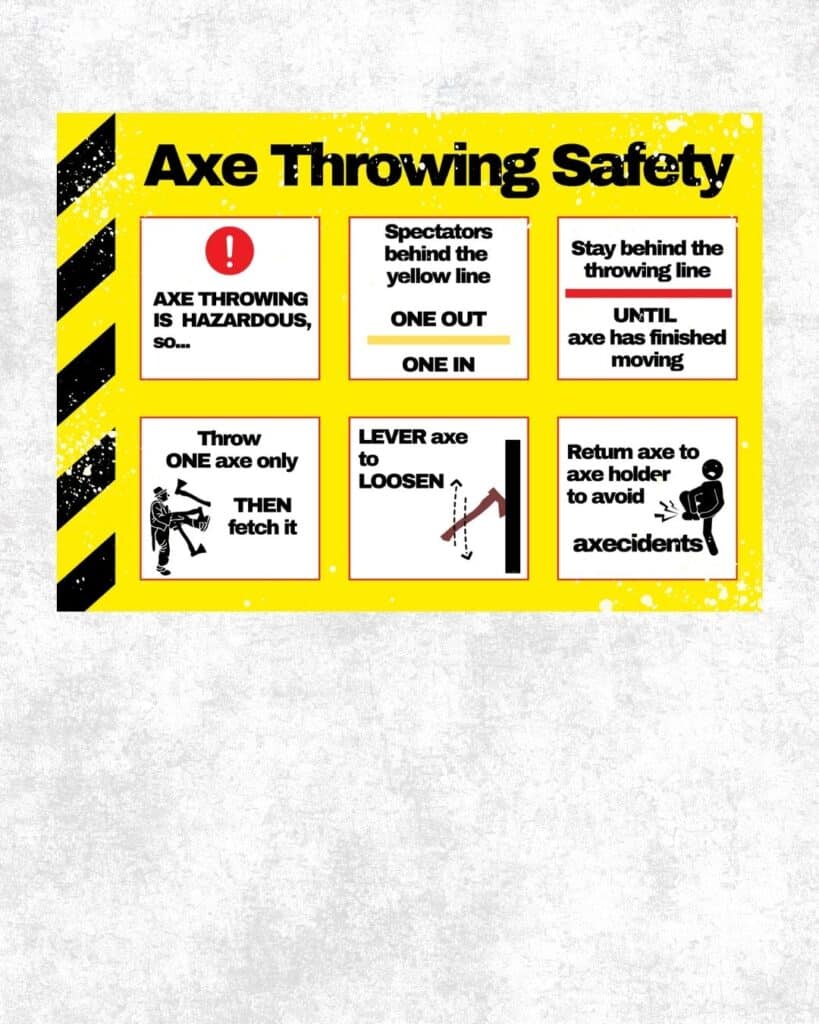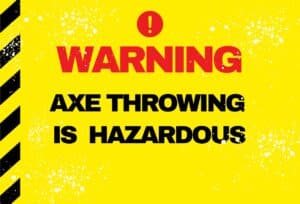How To Keep Safe Throwing Axes – 10 Safety Measures
10 safety measures to help keep axe throwing safe
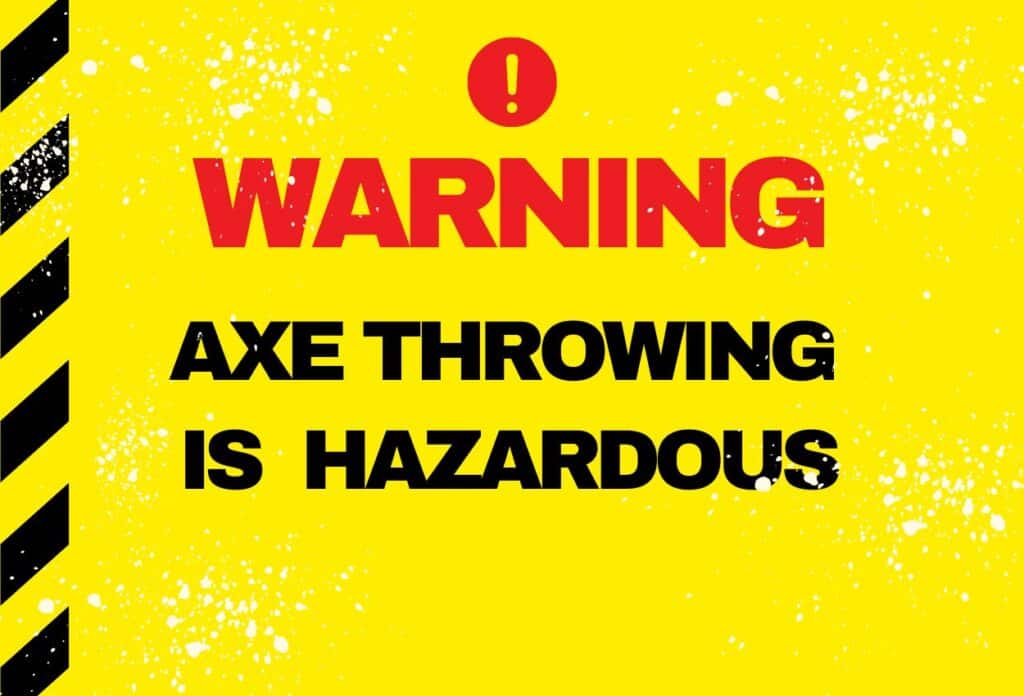
Axe throwing inevitably carries an element of risk, but thanks to responsible practices continues to be a relatively safe sport. Here are 10 key safety measures that help keep axe throwing safe.
1. Throw Better
It is a common adage in axe throwing that the answer to most problems is to “throw better”. This is certainly true when it comes to safety. Maybe it is obvious, but an axe in the hands of an expert is less likely to be an issue than one in the hands of a beginner (or especially, someone clowning about). Before we move on to practical safety measures, it is worth highlighting that knowing what you are doing is just as important, if not more.
This places a great deal of responsibility on the axe throwing coach. Competent coaching is the best way for beginners to learn to throw safely, with precision and consistency. This necessitates that the axe coach has a reasonable level of competence, preferably many years of experience, ass well as the ability to pass that on to others.
Of course, if it is your own home target and you are teaching yourself, you may not have access to good coaches, but there are plenty of good videos, books and websites around to help increase your proficiency.

2. Perform Routine Axe Maintenance
Ensuring axes are in good order by regular inspection and maintenance will catch any potential issues. Throwing axes often get a lot of abuse and it is easy for them to fall into disrepair if not looked after.
If an axe breaks while throwing it often just ends in a pile on the floor, but obviously bits of axe flying about could cause an issue. Checking the axes regularly for damage will help reduce the risk of someone throwing, sand breaking, a weakened axe. An axe that has developed minor cracks, may be repaired using tape (hockey tape for example) to stretch its life a little further. Although, often it is best just to bin a cracked haft, as it won’t last much longer anyway.
It’s not just about the axe breaking though. Anecdotally, the most common injury in axe throwing is getting a splinter (which also goes to show how rare axe throwing injuries are). A quick bit of sanding/filing will deal with any nicks that could cause injury. A rasp, file and sandpaper are useful tools to always have to hand.
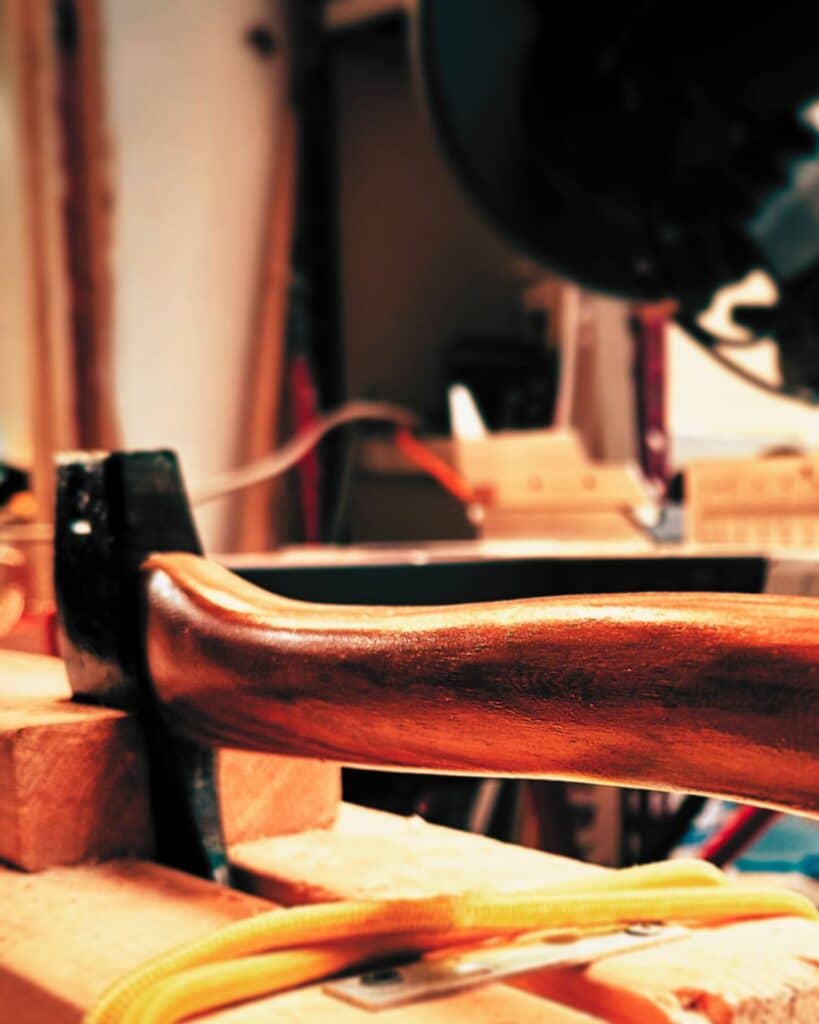
3. Protect the Axe Lane
With the best will in the world, axes don’t always hit the target and you wouldn’t want any going astray, particularly in a public location. Some sort of fencing is essential to keep the axes in the axe lane.
Wooden or wire fencing can be used as dividers between lanes, or a combination of both wood and wire. Wire fencing needs to be strong enough to stop an axe and with a small enough gauge to catch the smallest throwing implement (eg a knife). Some sort of stock/deer fencing is a good option.
Axe venues that focus on competition will often have dual target lanes, ie where two targets are in one lane with no divider between them (to facilitate head-to-head competition), with dividers on the outside edges. Obviously this needs to be accompanied by clear rules for each thrower to only collect their thrown axe once both have thrown. Typically, outdoor ranges don’t have dividers between the targets and abide by this rule as a matter of course.
Alternatively, many throwing venues (especially those that focus more on social throwing) will have one target per lane. The advantage of this is that each thrower is contained on their own lane, with no chance of other people getting in the way.
Unless you have a large area or very high ceilings (where a wayward axe going high in the air is not going to be a problem), then ceiling caging is also necessary. The wire ceiling should be high enough to only catch the really wayward axes. 12ft is normally plenty high enough, although even beginners rarely throw higher than 10ft from short distances.

4. Use Safety Nets
For outdoors throwing, it is more common to set up safety netting rather than construct wire fencing (netting could also be used indoors of course). Nets are used as a backdrop to catch axes going over the targets. Sometimes they are used to the sides of the targets too.
Specific “axe throwing netting” does exist, but a scaffolding or demolition type netting (made for catching heavy tools from height) should be sufficient.
Sports netting is generally not designed to catch bladed implements and even archery netting is not strong enough for axes (designed as it is to catch arrows rather than hefty axes).
The netting should be strung up securely a few feet about the height of the target. It will hang loosely to the floor. Not too tight, to avoid the axe bouncing. The axe should hit the net and drop harmlessly to the floor.
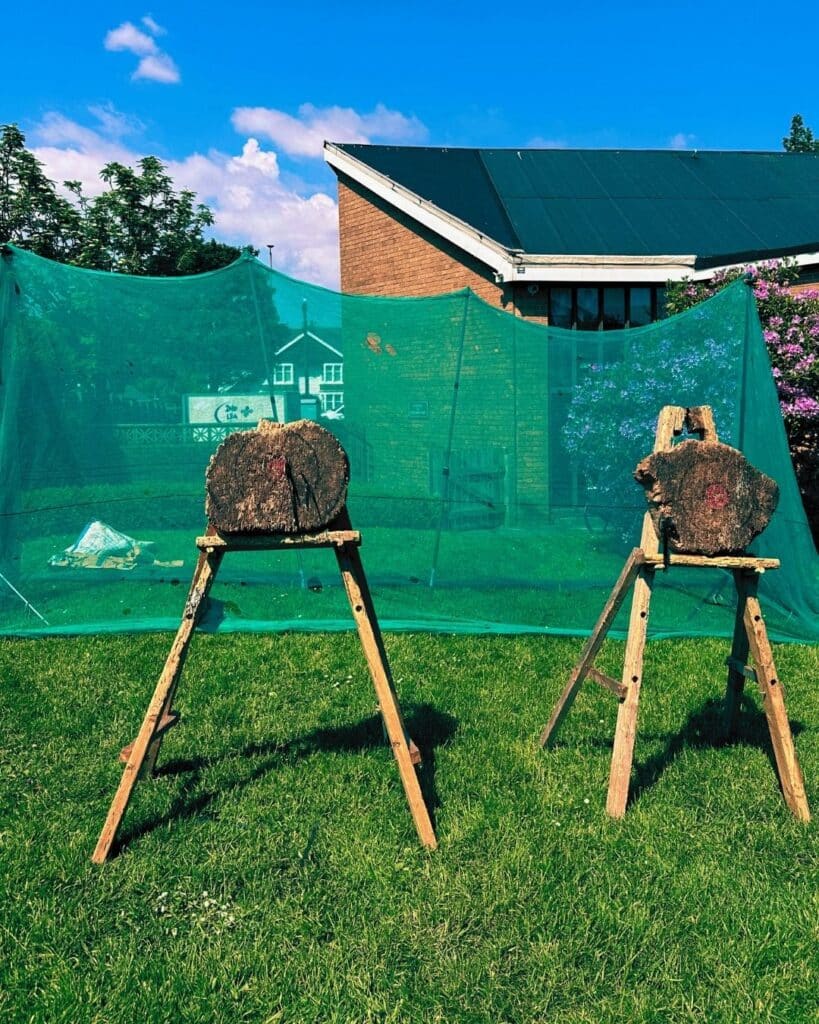
5. Have Bounce-Free Flooring
An axe that doesn’t stick in the target will fall to the floor and therefore the flooring needs to absorb that. If you are outside on soft grass, then there is no problem. However, if the floor is made of hard material, there is the danger of the axe bouncing around, with the risk of causing damage to the axe (and maybe the thrower).
Various items can be used to make a bounce free floor, such as wood chipping, carpet, OSB wood, rubber mats or rubber chippings. Each of these has good and bad points (which are discussed in more detail here). Rubber chippings are my preference for the absolute best way to stop a dropped axe (although chippings are possibly not as convenient or as cheap as other options).

6. Reduce Hard Surfaces Above the Target
If an axe misses the target and falls to the floor then that it is fairly easily handled and is unlikely to come anywhere near the thrower. However, if an axe misses above the board it may also bounce back at height. Although this rarely happens, if it does, it could be extremely dangerous. To counter this the area above the target also needs to be protected.
Some venues will set the target slightly forward with a back board of a soft wood, which will absorb some of the axe’s energy. Alternatively, the target can be surrounded by rubber matting, which provides a softer surface to hit.
The safest option favoured by many is for rubber mats to be attached above the target, only at their top. The mats then will hang loose above, and even to each side of the target on some occasions. When an axe hits these mats, rather than provide a firm material causing the axe to bounce back, the mat swings, taking the power out of the axe throw. The axe then simply drops to the floor.

7. Provide Axe Holders
Day-to-day axe throwing hazards are more often to be caused by minor mishaps rather than people being hit by flying axes et al. If axes are frequently passed from one thrower to another, then inevitably there is the danger of the odd incident of someone dropping it on their foot or catching a sharp part of the blade or some such thing. Even if throwers are taught to handle axes carefully there is always the danger of someone not concentrating for a second.
A simple solution is to provide an obvious place to put axes between turns. This may be a bucket or holder for a number of axes. Having a number of axes in one bucket can create more problems though. Other axes may be dislodged when one is taken out. Alternatively the holder can be divided into sections so that the axes are spread out.
Other options are to provide a block, to stick the axe in to, or to provide hangers to hang the axes on, near the axe lane opening. Sometimes the hanger may be magnetic with the axe head simply stuck to it.

8. Keep Blades Blunt
It is obviously far more likely for someone to cut themselves on a razor sharp axe blade than on a blunt one. Axes don’t need to be purposely blunted, but if they are not sharpened then they will be safer. (Some competitions even insist that axes aren’t sharpened).
Some throwers will protest that they need every advantage, but unless you are an elite axe thrower that needs every minor element to be perfect, then it is unlikely you will need to sharpen an axe to get it to stick. The wedge shaped blade of an axe is designed to embed into wood and even the bluntest axe will stick if thrown correctly.
Of course, axe blades will sometimes get nicks and burs that need to be tidied up, but that doesn’t mean they need a sharpened edge adding at the same time.
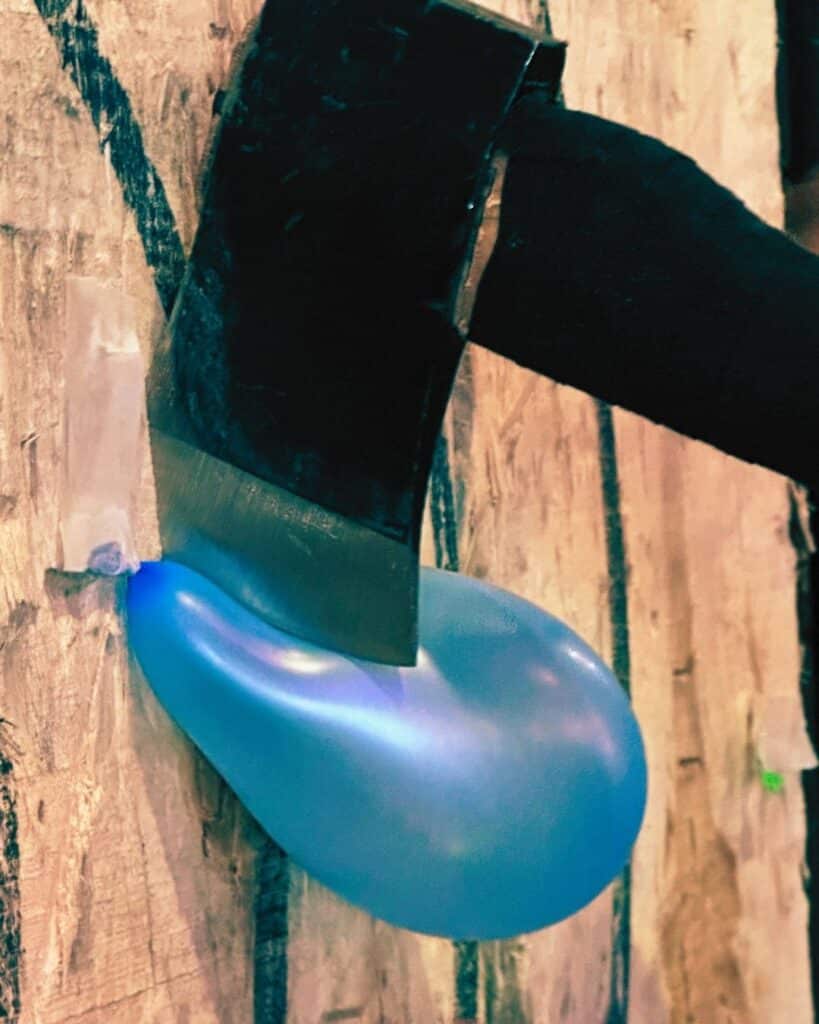
9. Encourage Sensible Footwear
It goes without saying that dropping an axe on your foot will hurt! Dropping an axe on a foot covered with a sensible shoe will reduce that hurt somewhat. (Obviously moving your foot will always be the best option).
Sandals, high heels or any other inappropriate shoe should be avoided when throwing. Some axe throwing venues will even insist that you wear “house Crocs” or similar to protect your feet (good intentions maybe, but a lawsuit waiting to happen if they are offering ‘safety equipment’).
Wearing something like a steel toe-capped boot is going to reduce the chances of harm even further, but axe throwing is usually more of a social sport and suitably sensible shoes or trainers will offer some protection (while not making the experience too much like working on a building site).

10. Have Clear Rules
Finally, it’s all very well having safety measures in place, but if people ignore or try to bend the rules, then safety is obviously impaired. Having clear rules that everyone understands – and follows – are also essential to safe axe throwing.
It is not just about the beginners/jokers. It is easy for throwers of any experience to lose concentration and potentially cause issues. Having clear rules and procedures in place help to make safety the normal day-to-day practice. Safety measures, that reduce the risk of even minor issues, then become just the way it is done. This enables throwers to enjoy their throwing while still keeping safe.
